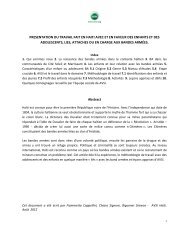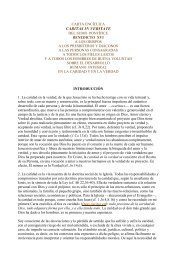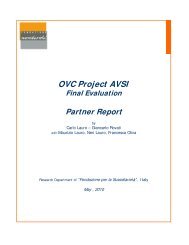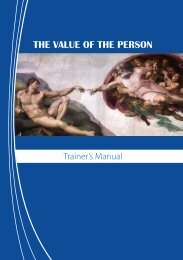Mine risk education training module - Avsi
Mine risk education training module - Avsi
Mine risk education training module - Avsi
You also want an ePaper? Increase the reach of your titles
YUMPU automatically turns print PDFs into web optimized ePapers that Google loves.
R<br />
E<br />
S<br />
O<br />
U<br />
R<br />
C<br />
E<br />
S<br />
27<br />
GLOSSARY OF TERMS<br />
This section defines terms that were used in the <strong>module</strong> and also gives<br />
additional useful information on other terms commonly used by the<br />
international community in MRE.<br />
Anti-handling Device. A device fitted to an anti-tank or anti-personnel<br />
mine that causes the mine to explode when it is handled or disturbed.<br />
Anti-handling devices are intended to prevent the clearing of mines by<br />
opposing forces.<br />
Anti-personnel <strong>Mine</strong> (APM). A mine designed to injure or kill one or<br />
more persons. Anti-personnel mines are usually detonated when they<br />
are stepped on or when a tripwire is disturbed, but they can also be set<br />
off by the passage of time or by controlled means. Differ from ATMs<br />
only in the amount of explosives inside.<br />
Anti-tank <strong>Mine</strong> (ATM). A mine designed to disable or destroy vehicles,<br />
including tanks. Like anti-personnel mines, antitank mines can be<br />
detonated by pressure (though normally much greater weight is needed)<br />
or remote control, as well as by magnetic influence or through the<br />
disturbance of a tilt rod (a sort of vertical tripwire). Differ from APMs<br />
only in the amount of explosives inside.<br />
Fuse. A mechanism which sets off a mine or munition.<br />
Landmines. An older term for mines, “Landmines” can be misleading<br />
because mines can also be laid in the water. Hence, the use of the<br />
preferred term, “mines”.<br />
<strong>Mine</strong> Ban Treaty. See Ottawa Treaty<br />
<strong>Mine</strong>s. <strong>Mine</strong>s include all types of landmines and booby traps, come in all<br />
shapes, sizes, and colors and can be made of wood, metal, or plastic.<br />
They are explosives “created to be put under, on or by the ground or<br />
any surface, and to be detonated by the presence, proximity or contact<br />
with a person or vehicle.” (Landmine Monitor 2002, p.912).<br />
<strong>Mine</strong> Marking. The organised marking of minefields. Standard, easily<br />
recognisable mine warning signs are placed around the perimeter of the<br />
minefield to alert people to the presence of mines.<br />
<strong>Mine</strong> Risk Education (MRE). Refers to a series of activities aimed at<br />
ensuring that communities are not only aware of the <strong>risk</strong>s from mines<br />
and UXO, but are encouraged to behave in a way that reduces the <strong>risk</strong> to<br />
people, property and the environment. The term MRE replaces “mine<br />
awareness.”<br />
Ottawa Treaty. Also known as the <strong>Mine</strong> Ban Treaty, the Ottawa treaty<br />
was adopted on 3 May, 1996 in Ottawa, Canada. It bans the use,<br />
stockpiling, production, and transfer of Anti-Personnel <strong>Mine</strong>s and demands<br />
that signatory countries destroy their existing stockpiles. The official title<br />
of the treaty is “Convention on the Prohibition of the Use, Stockpiling,<br />
Production, and Transfer of Anti-Personnel <strong>Mine</strong>s, and on Their<br />
Destruction.”<br />
Safe Path. A road or path which is known to be free of mines.<br />
Tilt Rod. A post or pole attached to a fuse mechanism on the upper<br />
surface of a mine. Pressure exerted on the tilt rod sets off the mine.<br />
Tripwire. A thin, non-reflective metal or coloured wire which can be<br />
used as a mechanism to trigger an antipersonnel mine or a booby trap. A<br />
tripwire is usually stretched low above the ground so that any passer-by<br />
will ‘trip’ over it, thus setting off the explosive.<br />
Unexploded Ordnance (UXO). Explosive munitions which have not<br />
yet been set off. UXO may already have been fired, dropped, or launched,<br />
but it has failed to detonate as intended.

















